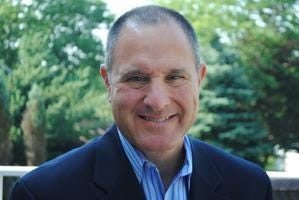
There is so much buzz in this country about criminal justice reform. Much of the focus is on mass incarceration. America puts more people in prison for longer periods of time than nearly every other nation in the world.
Prisons and jails are not pleasant places. They are often dirty, smelly, overheated places filled to capacity with a constant threat of violence. However, as inconceivable as it may seem, some people commit crime hoping to get caught because they want to go to jail.
Some see incarceration as a way to get shelter and food. Others seek jail as a way to get healthcare, or mental health treatment. Some former inmates become institutionalized after a long prison stay and find it easier to cope with the structure of a prison than adjusting to life on the street.
Hidden Homelessness, a survey of more than 400 homeless people by Sheffield Hallam University, in England, revealed the desperate steps taken by the homeless to find shelter. One-in-five homeless people have committed offenses punishable by incarceration just to spend a night in jail away from harsh weather and the dangers of the street.
Correctional facilities in the U.S. are considered the largest provider of mental health services. More people are receiving mental health treatment in prison than in mental health facilities.
When mental health facilities began to close in the 1950s, they weren’t replaced, as promised, with mental health services in the community. As a result, prisons and jails have become de facto mental health facilities. Many people with mental illness have scrapes with the law, intentional and unintentional, and end up incarcerated.
At the same time, the correctional system is struggling to provide constitutionally adequate treatment. At least those in prison are mandated to receive treatment – no such “mandate” exists on the street. Nearly 40 percent of inmates in state and federal prison report having some mental health disorder.
Then there are those who seek to be imprisoned in order to get health care treatment unavailable or unaffordable to them on the street.
A vivid example of “prison in exchange for health care” is Frank Morrocco of Amherst, New York. He was released from prison after serving 20 years on felony drug conspiracy charges, reported the Business Insider.
Unable to afford healthcare for a rare form of leukemia, Morrocco walked into a grocery store, stepped up to the counter, and grabbed about $23 worth of merchandise in front of store employees and walked out the front door.
He was eventually arrested on a shoplifting charge. The charge was a violation of his parole. He was hoping the act would result in returning to prison so that he could get health care treatment unavailable on the street.
What is the state of a nation that has people who seek the comfort of a prison cell as opposed to “freedom?”
Reform advocates are pushing lawmakers across the country to ease the pressure on jails and prisons. Leaders on both ends of the political spectrum want less people in prison. Yet, for some, life is so difficult outside prison walls that they seek the refuge of incarceration.
Matthew T. Mangino is of counsel with Luxenberg, Garbett, Kelly & George P.C. His book The Executioner’s Toll, 2010 was released by McFarland Publishing. You can reach him at www.mattmangino.com and follow him on Twitter @MatthewTMangino.
This article originally appeared on Crestview News Bulletin: Prisons offer an alternative for refuge for some
